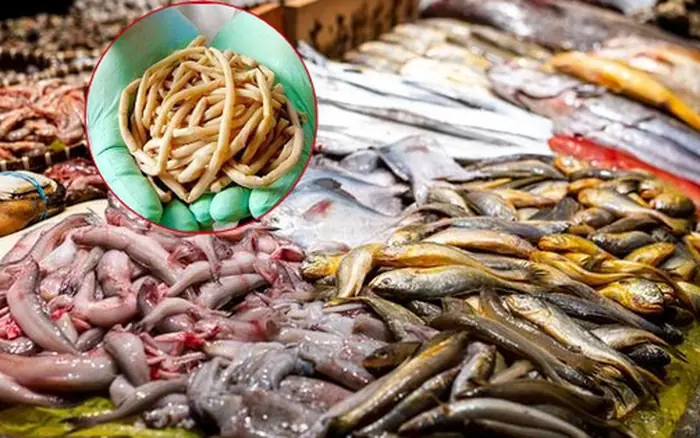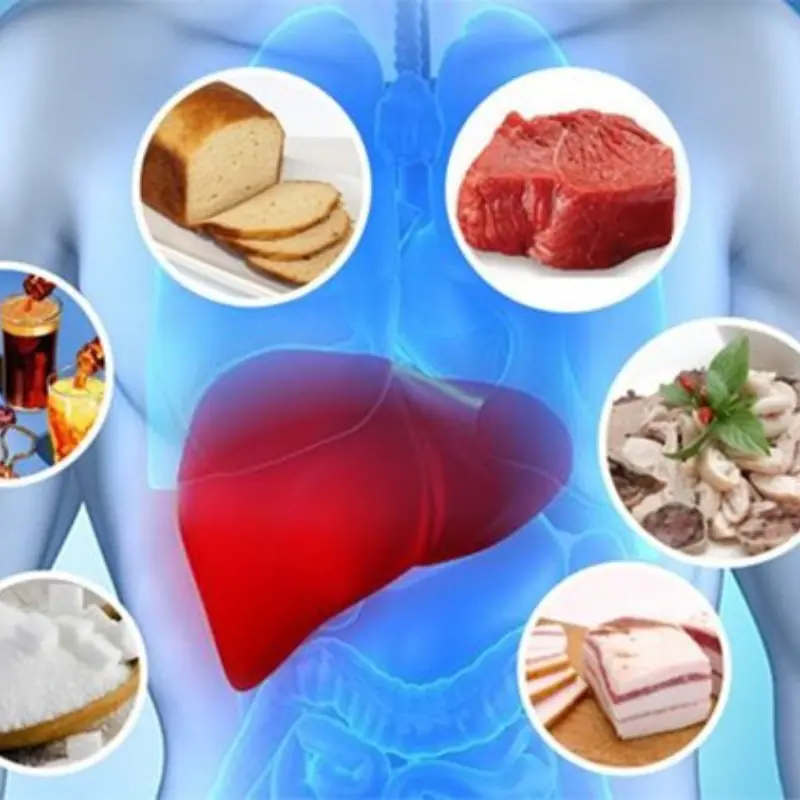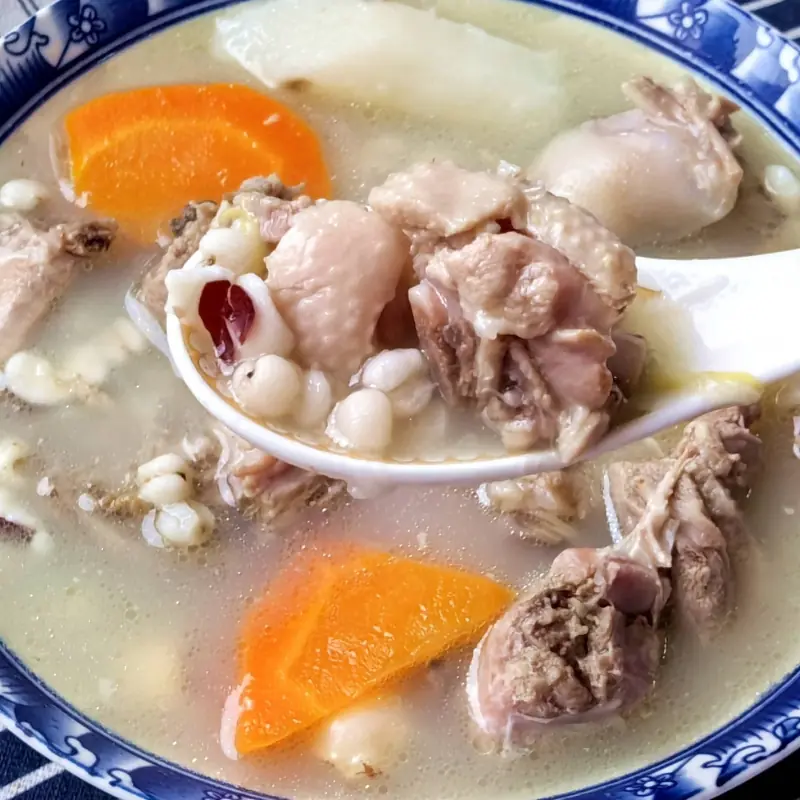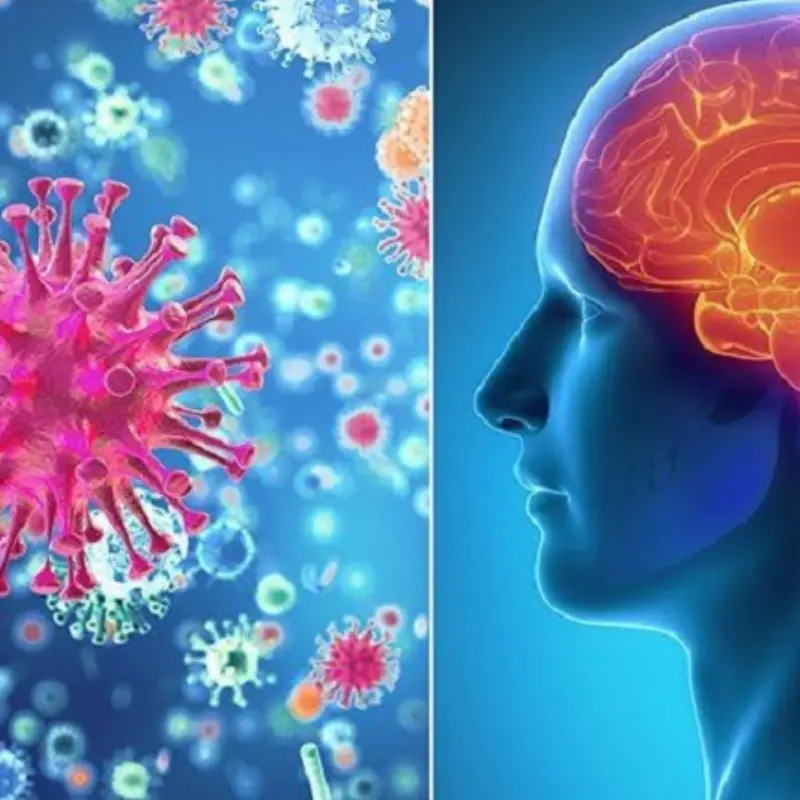
5 Foods That Are Considered "Parasite Havens" – Some of Which Are Very Popular
5 Foods That Are Considered "Parasite Havens" – Some of Which Are Very Popular
Poor hygiene and improper eating habits can easily allow parasites—such as worms and flukes—to infect the body through the digestive tract.

Parasite infection is a common health issue, and various types of food can be contaminated by different parasites. Parasite infection refers to worms, flukes, bugs, etc. invading and living as parasites in the human body through transmission routes such as through soil, through the skin, through food consumption, or even from animals to humans.
Is parasite infection dangerous?
Yes. Parasites invade the body by sucking blood or absorbing the nutrients we consume to grow and multiply. Over time, if they are not detected and treated promptly, they can lead to damages such as malnutrition, liver, brain, lung, or kidney injury—and can even be life-threatening.
Eating food infected with parasites can cause symptoms such as abdominal pain, diarrhea, and nausea. In some cases, there may be no obvious symptoms immediately after eating, but later on, it may cause itching, hives, weight loss, malnutrition, anal itching, anemia, digestive disorders, prolonged fever accompanied by chills and shivering, etc.
Below are five foods that are known as "parasite havens" that you need to be cautious about:
1. Eel
Eels are very rich in nutrients such as protein, fat, vitamin A, niacin, potassium, magnesium, phosphorus, etc., which are good for health and suitable for people with anemia or a weak constitution. However, eels are also one of the common foods at high risk of parasite infection. This is because eels live in muddy environments, ponds, or turbid water areas; moreover, as omnivorous animals, they are very prone to both bacterial and parasitic infections.
Among these, the most common parasites in eels are hookworms and tapeworms. Hookworms can invade the human body through the digestive tract of the eel, while tapeworms typically parasitize the eel’s intestines.
Therefore, before eating eels, you must ensure that they are thoroughly cooked and avoid consuming raw or undercooked eel. Also, only purchase eels that are still alive and fresh—never buy dead ones.
2. Raw Oysters
Oysters are a food rich in protein, low in fat, and very nutritious, but they are also a common cause of food-related illnesses.
The most common parasites include those found in shellfish, such as liver flukes and roundworms.
Thus, before eating raw oysters, you must ensure that the oysters are fresh, have been properly cleaned, and have been soaked in salt water or clean water for a period to eliminate any potential parasites. Overall, raw oysters are not a recommended dish due to their high risk of infection. People with weak digestive systems, poor appetite, diarrhea, stomach pain, intestinal inflammation, or allergies to high-protein seafood should absolutely avoid eating raw oysters.
3. Snails
Snails are rich in protein, but because their natural habitat is in muddy areas, eating snails also carries a high risk of parasite infection—such as liver flukes, lung flukes, and roundworms—if they are not properly cleaned before preparation or are undercooked. According to various statistics, each snail can contain between 3,000 and 6,000 roundworm parasites.
It is best not to buy snails that have a greasy, yellowish film on their shells, as these snails might be living in polluted environments. When you bring snails home, they must be washed several times and soaked to allow them to expel all the mud, while removing any spoiled or dead snails, and then cooked thoroughly before eating.
4. Sashimi
Sashimi is a famous traditional Japanese dish that has become increasingly popular worldwide, including in Vietnam. It is characterized by the use of raw fish, fish eggs, and other seafood, typically served with mustard, soy sauce, and pickled ginger.
Because it consists of raw seafood, sashimi is also a dish that can easily become contaminated with parasites. Examples include the larval form of roundworms causing Anisakiasis—commonly found in certain types of salmon, cod, mackerel, herring—as well as flukes, among others.
If you choose to eat sashimi, you must select reputable establishments and ensure that the seafood has been properly processed (for example, adequately frozen as required by safety regulations). Avoid overconsumption and remember to have regular deworming check-ups.
5. Rare Beef (Undercooked Beef)
Many people enjoy rare beef or even eat it raw to fully appreciate the flavor of this protein-rich dish. However, eating rare beef is also one of the fastest ways to introduce parasites into your body.
In beef in general—and in animal meat and offal in particular—parasites such as tapeworms, fibrous tapeworms, and liver flukes can often be found. If these parasites invade the body and establish themselves, they can easily affect and cause diseases in the digestive system and even in other organs.
News in the same category


Eat boiled green bananas every day - Unexpected health benefits

Pumpkin is really good, but for these 5 groups of people, it is a "double-edg.ed s.word" for health and should be limited

A new can.cer vaccine trains the immune system to recognize and attack tumor cells

What are the benefits of drinking lemon water?

Eliminate Nail Fungus Naturally

Natural remedy for sore joints and bones: Only four ingredients!

Overeating These 5 Foods Is Like ‘Overworking and Straining’ Them

No Matter How Delicious, Avoid Overeating These Foods to Protect Your Liver

Two strange points of headache warn of brain tumor, don't ignore

5 Drinks That Damage the Liver Faster Than A.lco.ho.l

Limit Chicken and Beef in April, Prioritize These 3 Nutritious Meats

10 minutes of jogging or 1 hour of walking: Which is the golden choice for health and longevity?

You’ll keep her/him satisfied all night long with this powerful mix...

Eating eggs with avocado for breakfast

You're looking for natural remedies

Boost Your Morning with a Game-Changing Coffee and Egg Combo

See a Doctor Immediately as You May Have Meningococcal Meningitis
News Post

10 Cancer-Linked Foods You Should Never Put in Your Mouth Again

Rosemary Lemon Grilled Chicken

Eat boiled green bananas every day - Unexpected health benefits

3 parts of shrimp that "accumulate t.oxins" - Many people eat them without knowing

Pumpkin is really good, but for these 5 groups of people, it is a "double-edg.ed s.word" for health and should be limited

A new can.cer vaccine trains the immune system to recognize and attack tumor cells

5 types of poisonous meat and fish that are so terrible that sellers don't dare eat a piece

If the electric fan is dirty, don't rush to disassemble it.

Natural Treatment for Diabetes, Stomach Issues, and High Blood Pressure

What are the benefits of drinking lemon water?

Eliminate Nail Fungus Naturally

Natural remedy for sore joints and bones: Only four ingredients!

Overeating These 5 Foods Is Like ‘Overworking and Straining’ Them

No Matter How Delicious, Avoid Overeating These Foods to Protect Your Liver

Why should you pour salt down the drain at night?

Cleaning the washing machine is very necessary, but not everyone knows about this hidden switch

How to Deodorize Your Microwave with Lemon

Two strange points of headache warn of brain tumor, don't ignore

Put Your Quick Wit to the Test: Can You Solve This Brain Teaser?
